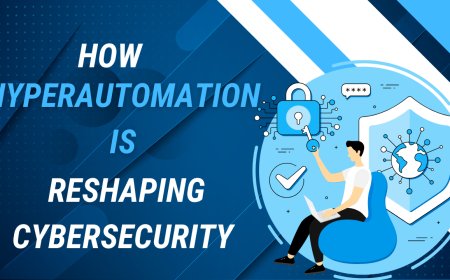Proactive Incident Response to reduce Attack Surface
Proactive incident response (IR) is a strategic approach focused not only on reacting to security incidents but also on anticipating and minimizing threats before they materialize.

Proactive incident response (IR) is a strategic approach focused not only on reacting to security incidents but also on anticipating and minimizing threats before they materialize. One of the most effective outcomes of proactive IR is attack surface reductionlimiting the number of potential entry points a threat actor can exploit.
Reducing the attack surface with Incident Response involves leveraging IR processes not just reactively, but proactively to identify, minimize, and eliminate potential entry points that adversaries might exploit.
How Incident Response Reduces Attack Surface
1. Incident Root Cause Analysis ? Surface Reduction
-
Action: Every security incident is analyzed to uncover the initial entry point (e.g., exposed port, unpatched service, misconfigured IAM).
-
Impact: Once identified, incident response teams can recommend removing or hardening the vulnerable component, permanently reducing exposure.
-
Example: If an attacker gained access via an outdated web app, the team may retire or isolate the app.
2. Feedback Loop into Hardening Policies
-
Action: Lessons learned from incidents feed directly into security configuration baselines, firewall rules, access controls, and patch cycles.
-
Impact: Future similar attack vectors are proactively closed.
-
Example: An incident involving lateral movement via SMB leads to policy changes disabling SMBv1 across the environment.
3. Compromise Assessments to Identify Unknown Exposure
-
Action: After an incident, broader compromise assessments often uncover other at-risk systems or misconfigurations.
-
Impact: Those systems are patched, hardened, or segmented, further shrinking the attack surface.
4. Threat Hunting Leads to Surface Discovery
-
Action: IR teams perform threat hunting based on recent TTPs (Tactics, Techniques, and Procedures) from threat intel.
-
Impact: Identifies unmonitored services, shadow IT, or weak configurations.
-
Example: Discovering unauthorized RDP services on internet-facing assets during a hunt.
5. Automation and Orchestration of Response
-
Action: Use SOAR platforms to auto-contain compromised endpoints, disable accounts, or remove rogue assets upon detection.
-
Impact: Minimizes dwell time and rapidly shrinks the window of attack.
-
Example: Auto-isolating any endpoint that triggers a ransomware alert.
6.Continuous Asset Discovery and Inventory
-
Why: You cant protect what you dont know exists.
-
Action: Continuously scan for new devices, applications, and services. Maintain a real-time inventory.
-
Tools: Nmap, Shodan, CMDB integrations, cloud asset discovery tools (e.g., AWS Config, Azure Defender).
7.Threat Hunting and Detection Engineering
-
Why: Early identification of anomalies reduces the likelihood of a full-blown attack.
-
Action: Hunt for indicators of compromise (IoCs) and tweak detection rules regularly.
-
Tools: NetWitness incident response services, ELK stack, Splunk, Sentinel, CrowdStrike Falcon, custom YARA rules.
8.Patch and Vulnerability Management
-
Why: Unpatched software is a top initial access vector.
-
Action: Conduct regular vulnerability assessments and apply critical patches within SLAs.
-
Best Practice: Automate vulnerability scans with tools like Nessus or Qualys.
9.Configuration Hardening and Baselines
-
Why: Misconfigurations are low-hanging fruit for attackers.
-
Action: Use secure baselines (CIS, NIST), disable unnecessary services, enforce strong configurations.
-
Tools: CIS-CAT, Microsoft Security Compliance Toolkit.
10. Attack Surface Monitoring
-
Why: Your external exposure constantly changes.
-
Action: Monitor internet-facing systems for open ports, exposed services, and misconfigured endpoints.
-
Tools: Attack surface management (ASM) platforms like Palo Alto Cortex Xpanse, Randori, or CyCognito.
11. Red Teaming & Purple Teaming
-
Why: Simulated attacks reveal real weaknesses.
-
Action: Conduct regular red team assessments and coordinate with blue teams to improve detection and response (purple teaming).
-
Outcome: Identifies shadow IT, weak credentials, lateral movement paths.
12. Security Metrics and Feedback Loops
-
Why: Measure what matters to improve.
-
Action: Track time to detect (TTD), time to respond (TTR), and mean time to recovery (MTTR). Use these insights to fine-tune controls.
-
Cycle: Incident response tools feeds vulnerability management, hardening, and policy updates.
13. User Behavior Analytics (UBA) and Insider Threat Detection
-
Why: Insiders and credential misuse are rising threats.
-
Action: Monitor for abnormal user behavior, impossible logins, and privilege misuse.
-
Tools: UEBA platforms like Exabeam, Microsoft Defender for Identity.
14. Security Awareness and Simulated Phishing
-
Why: Humans are often the weakest link.
-
Action: Run regular training and phishing simulations. Incorporate lessons learned into your incident response playbooks.
-
Tools: KnowBe4, Cofense, Proofpoint.
15.Tabletop Exercises and IR Playbook Refinement
-
Why: Practice ensures readiness.
-
Action: Run simulated incident response scenarios to test team readiness and discover policy/technical gaps.
-
Update: Refine playbooks based on outcomes.
Example Workflow
-
Incident: Malware detected on endpoint ? entry point = phishing with malicious macro.
-
IR Analysis: Macro abused Word's default settings.
-
Remediation:
-
Disable macros via GPO.
-
Remove local admin rights.
-
Block relevant IOC domains.
-
-
Result: One phishing vector permanently removed, reducing the attack surface.
Summary
| Strategy | Impact on Attack Surface |
|---|---|
| Asset Inventory | Identifies unknown exposure |
| Patch Management | Closes known vulnerabilities |
| Hardening | Reduces misconfigurations |
| Threat Hunting | Detects and removes active threats |
| Attack Surface Monitoring | Finds public-facing weak spots |
| Red/Purple Teaming | Reveals real-world attack paths |
| Security Awareness | Limits social engineering risks |

































